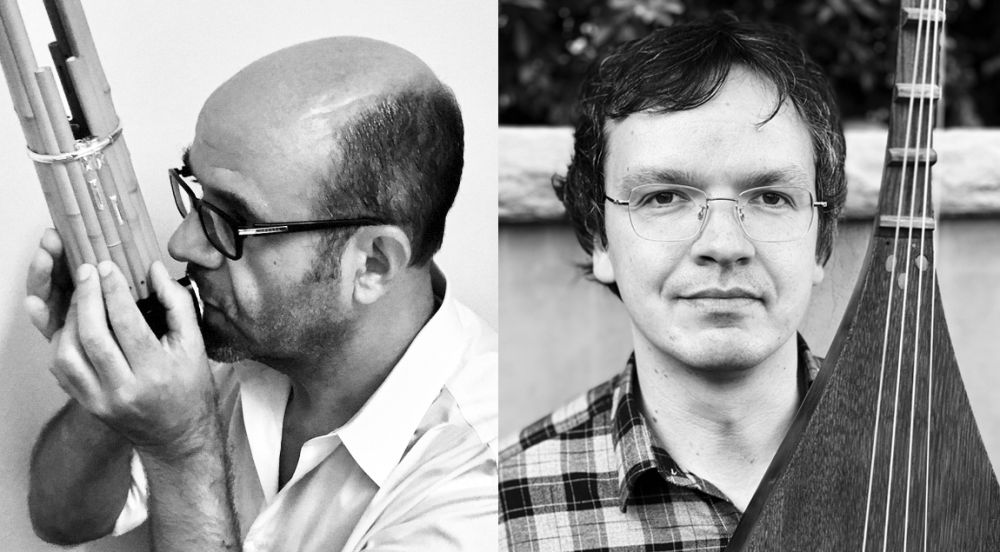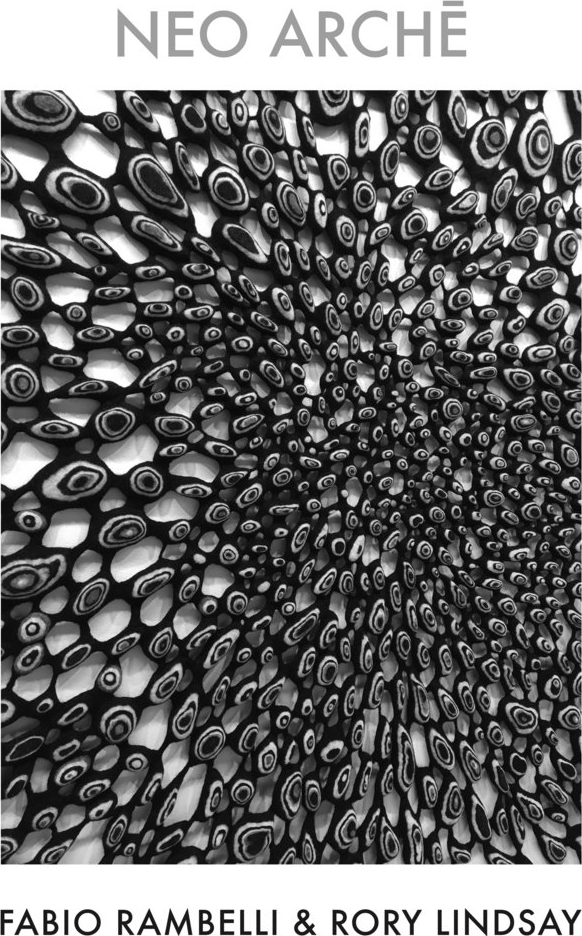

Lots of people have picked up a hobby or tried to learn a skill during the pandemic. Fabio Rambelli and Rory Lindsay recorded a digital album with ancient instruments used in Gagaku, the 1,000-year-old music of Japan’s Imperial Court.
Esoteric? Sure. But Rambelli, a UC Santa Barbara professor of religious studies and of East Asian cultures, and International Shinto Foundation Chair in Shinto Studies, and Lindsay, a visiting scholar in the Department of Religious Studies, were more than up for the task.
Rambelli plays the shō, a reed instrument that’s been used in Japan since the 8th century, while Lindsay has been playing a variety of stringed instruments since he was a young teenager. For the recording Lindsay learned to play the biwa, a lute-like instrument that came to Japan from China around the time the shō arrived.
The album is an offshoot of Rambelli’s Gagaku project, which he developed early in 2020 after acquiring 14 instruments on loan from UCLA. After 17 Gagaku masters held workshops and performed on campus in early March, Rambelli wanted to maintain the momentum for the music.
“Rory and I are both very passionate about these two instruments,” he said, “and we wanted to try to make original music by using the sounds of Gagaku and some of the traditional techniques and styles, but also by adding our own sensibilities.”
Their album, “Neo Archē,” blends the ancient with the modern.
“Rory comes from rock (as a guitarist) and from many years of study of Middle Eastern and Indian string instruments,” Rambelli explained. “I come from progressive rock (particularly jazz-rock), jazz and free improvisation. We are both interested in ambient and minimal music.
“The sounds and structures of Gagaku became the framework that brought our music sensibilities together and which allows for a ‘fusion’ of these many tendencies,” he continued. “Our music does not sound like classical Gagaku at all, but the experts will certainly recognize a few elements here and there. Others will find echoes of Terry Riley, Arvo Pärt, Tangerine Dream, Robert Fripp and others.”
Lindsay, a scholar of Tibetan studies who has played stringed instruments from India, Turkey and Greece, said learning to play the biwa, which is believed to have originated in Persia, wasn’t especially difficult.
“It's been a real joy to play the biwa,” he said, “as I've never played an instrument with strings made of silk before, nor one with so few frets. It only has four frets! Quite a short neck compared to all of the other instruments I play. This is limiting but it forces you to use alternate tunings and get creative with the notes you have.”
“It was totally amazing how quickly he was able to pick up the subtleties of biwa playing,” Rambelli said, “and come up with his very unique sound, which blends classical Gagaku biwa sound with more Middle Eastern flavors.”
The mostly improvised songs were created after deciding on elements like tempo, level of dissonance and sound density. For each song, Rambelli wrote a few segments, all based on classical Gagaku pieces for shō that he retrieved from manuscripts dating to the 12th century.
“I should also mention that the very nature of our instruments is also challenging,” Rambelli said. “The shō can only play 17 sounds, and the biwa 16! In this recording, I also created a new mode based on a classical Gagaku mode, which imagines its original, and long lost, Middle Eastern flavor. To contribute to variety, but in a subtle and non-intrusive way, Rory also added some samplings from well-known Gagaku pieces, and I played some parts in a very dissonant way.”
Because the campus was closed when they created the album, each player recorded his part at home while listening to the other on headphones. Lindsay then mixed them before the collection was sent to England for mastering.
“Neo Archē” can be heard on Bandcamp, a major venue for independent artists. It’s also available for purchase and download in various formats.
“I think that the music we were able to create and its sound is pretty amazing — soothing and sometimes solemn but also full of depth and energy,” Rambelli said. “We wanted to use the ritual sensibility and solemnity of Gagaku but set it in a more introspective and domestic environment, something that would sooth and reinvigorate at the same time.”



